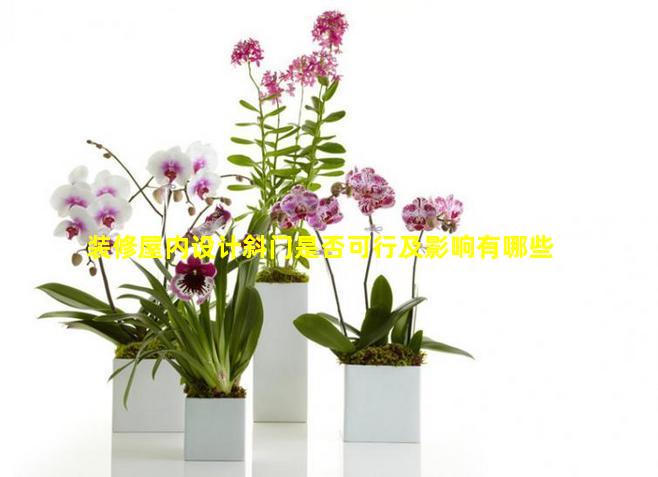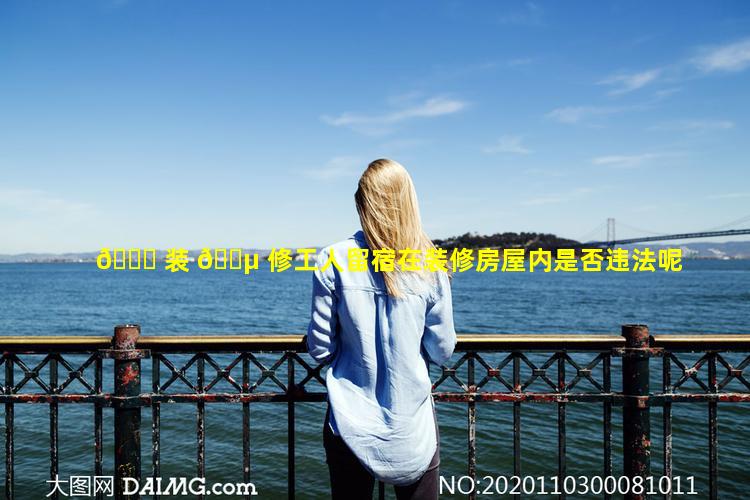装修屋内设计斜门是否可行及影响有哪些
- 作者: 郭黎初
- 来源: 投稿
- 2024-11-03
1、装修屋内设计斜门是否可行及影响有哪些
斜门在室内设计中的可行性及影响
可行性在某些情况下,斜门在室内设计中是可行的,例如:
小空间:斜门可以节省狭小空间,因为它们不需要与墙壁平行。
不规则形状的房间:斜门可以适应不规则形状的房间,为家具和布局提供更多可能性。
独特风格:斜门可以为空间增添独特和现代感。
影响选择斜门时,需要考虑以下影响:
优点:节约空间:如前所述,斜门可以节省狭小空间。
美观:斜门可以打破传统布局,为空间增添现代和独特魅力。
创造视觉兴趣:斜门可以成为一个引人注目的元素,吸引人们的视线并创造视觉兴趣。
缺点:成本:斜门通常比标准门贵,因为它们需要定制。
安全性:斜门可能不如标准门安全,因为铰链更暴露。
不便:斜门可能不如标准门方便使用,特别是对于行动不便的人。
布局限制:斜门会对家具和布局选择产生限制,因为它们不与墙壁平行。
采光:斜门可能比标准门让进来的光线更少,这可能会使房间变暗。
其他注意事项在考虑斜门时,还需要考虑以下因素:
空间尺寸:斜门适用于小空间或不规则形状的房间。
使用目的:斜门是否适用于卧室或卫浴等私人空间。
个人风格:斜门与整体室内设计风格是否相符。
安全问题:斜门的安全隐患是否已得到妥善解决。
结论斜门在室内设计中是否可行取决于具体情况。在考虑节省空间、美观和独特性时,它们可以是一个不错的选择。需要仔细权衡成本、安全性和方便性等影响,以确保它们是适合特定空间和用途的最佳选择。
2、如何制改斜门的风水
我不确定“斜门”的风水是什么,但这里有一些一般性的风水技巧,可以帮助改善您家或办公室的能量流动:
清洁和整理:整洁无杂乱的空间可以促进能量流动。
自然光和通风:自然光和新鲜空气可以净化空间并使之具有活力。
使用植物:植物可以带来新鲜感和生机,并吸收空气中的毒素。
摆放家具:家具应放置在促进和谐能量流动的方式。避免阻挡入口或窗户。
使用颜色:颜色可以对情绪和能量产生影响。选择光亮或中性的颜色,营造温馨的氛围。
使用晶体和宝石:某些晶体和宝石被认为具有特定能量,可以用来平衡空间。
创造水景:水景,如喷泉或水族馆,可以带来平静和安宁。
使用香味:某些香味,如柑橘类或花香,可以提升情绪和能量。
避免尖角和凌乱的线条:尖角和凌乱的线条会创造不良的能量。选择圆形和流畅的线条。
使用镜子:镜子可以反射光线并扩大空间感。
注意入口:入口是能量进入空间的地方。保持它干净、光亮且欢迎。

3、室内门装斜门好不好
室内门安装斜门的影响
优点:空间利用率高:斜门可以充分利用紧凑的空间,尤其是狭窄的走廊或入口处。
美观性:斜门可以营造一种独特而有吸引力的视觉效果,增添室内装饰的趣味性。
节省空间:斜门不需要完全打开就可以让物品通过,这可以节省宝贵的空间。
缺点:不便使用:斜门比直门更难打开和关闭,特别是对于携带物品的人来说。
不适合轮椅:斜门不适合轮椅使用者通过,因为它会造成阻碍。
潜在的安全隐患:斜门在紧急情况下可能更难逃生,因为它需要更多时间和力气来打开。
其他注意事项:门的大小和重量:斜门应足够宽敞和轻便,以方便使用。
门摆动方向:斜门应朝正确方向摆动,以优化空间利用率。
门把手和铰链:斜门的门把手和铰链应专门设计,以适应其倾斜角度。
门框:斜门需要一个专门设计的门框,以确保其正确安装和稳定性。
结论:是否安装室内斜门取决于具体情况。如果空间利用率、美观性和节省空间是优先考虑的因素,那么斜门可能是一个不错的选择。如果便利性、安全性或无障碍性是主要关注点,那么直门可能更合适。最终的决定应基于对优点和缺点的仔细权衡。
4、斜门设计造型图片
Architects: OHLAB
Location: Sabadell, Spain
Year: 2019
Area: 5,166 ft2
Photography: Adrià Goula
La Llama is a side table with a unique and modern design. Its structure is made of solid walnut wood, while the top is made of ceramic. The organic shape of the table gives it a sculptural quality, while the warm tones of the wood and the ceramic add a touch of elegance.
Designers: Formafantasma
Location: Barcelona, Spain
Year: 2018
Material: Walnut wood, ceramic
Dimensions: 15.7" x 15.7" x 15.7" (40 cm x 40 cm x 40 cm)
Photography: Formafantasma
in London, United Kingdom
The Design Museum, located in Kensington, London, is a museum dedicated to contemporary design. The museum's collection includes over 3,000 objects, ranging from furniture and fashion to architecture and graphics. The museum's building was designed by John Pawson and is itself a work of contemporary design.
Architects: John Pawson
Location: London, United Kingdom
Year: 2016
Area: 100,000 ft2
Photography: Hufton + Crow
in Melbourne, Australia
NGV Triennial is a contemporary art exhibition held every three years at the National Gallery of Victoria in Melbourne, Australia. The exhibition showcases the work of both emerging and established artists from around the world. The 2017 NGV Triennial was curated by Simon Castets and featured the work of over 100 artists.
Curators: Simon Castets
Location: Melbourne, Australia
Year: 2017
Artwork: Various artists
Photography: NGV Triennial
in Barcelona, Spain
Casa Milà, also known as La Pedrera, is a building designed by Antoni Gaudí and located in Barcelona, Spain. The building is known for its unique facade, which is covered in wrought iron balconies and mosaics. The building was completed in 1910 and is now a UNESCO World Heritage Site.
Architect: Antoni Gaudí
Location: Barcelona, Spain
Year: 1910
Area: 30,000 ft2
Photography: Adrià Goula
in New York City, United States
The High Line is a public park built on an abandoned elevated railway line in New York City. The park stretches for 1.45 miles and offers stunning views of the city. The High Line was designed by James Corner Field Operations and Diller Scofidio + Renfro and opened in 2009.
Designers: James Corner Field Operations, Diller Scofidio + Renfro
Location: New York City, United States
Year: 2009
Area: 1.45 miles
Photography: Iwan Baan
in Porto, Portugal
Casa da Música is a concert hall located in Porto, Portugal. The hall was designed by Rem Koolhaas and opened in 2005. The building is known for its unique and modern design, which includes a glass and concrete facade.
Architect: Rem Koolhaas
Location: Porto, Portugal
Year: 2005
Area: 120,000 ft2
Photography: Iwan Baan
in London, United Kingdom
The Serpentine Pavilion is a temporary pavilion that is built in the grounds of the Serpentine Gallery in London, UK. The pavilion is designed by a different architect each year and has become a major attraction for both tourists and locals. The 2018 Serpentine Pavilion was designed by Frida Escobedo.
Architect: Frida Escobedo
Location: London, United Kingdom
Year: 2018
Area: 3,780 ft2
Photography: Iwan Baan
in New York City, United States
The Whitney Museum of American Art is a museum located in the Meatpacking District of New York City. The museum is dedicated to the collection and exhibition of American art. The museum's building was designed by Renzo Piano and opened in 2015.
Architect: Renzo Piano
Location: New York City, United States
Year: 2015
Area: 220,000 ft2
Photography: Iwan Baan
in London, United Kingdom
The Shard is a skyscraper located in London, UK. The building was designed by Renzo Piano and completed in 2012. The Shard is the tallest building in the UK and offers stunning views of the city.
Architect: Renzo Piano
Location: London, United Kingdom
Year: 2012
Area: 1,016,000 ft2
Photography: Iwan Baan
in Beijing, China
The CCTV Headquarters is a skyscraper located in Beijing, China. The building was designed by Rem Koolhaas and completed in 2012. The CCTV Headquarters is one of the most iconic buildings in Beijing and is known for its unique and modern design.
Architect: Rem Koolhaas
Location: Beijing, China
Year: 2012
Area: 3,470,000 ft2
Photography: Iwan Baan




